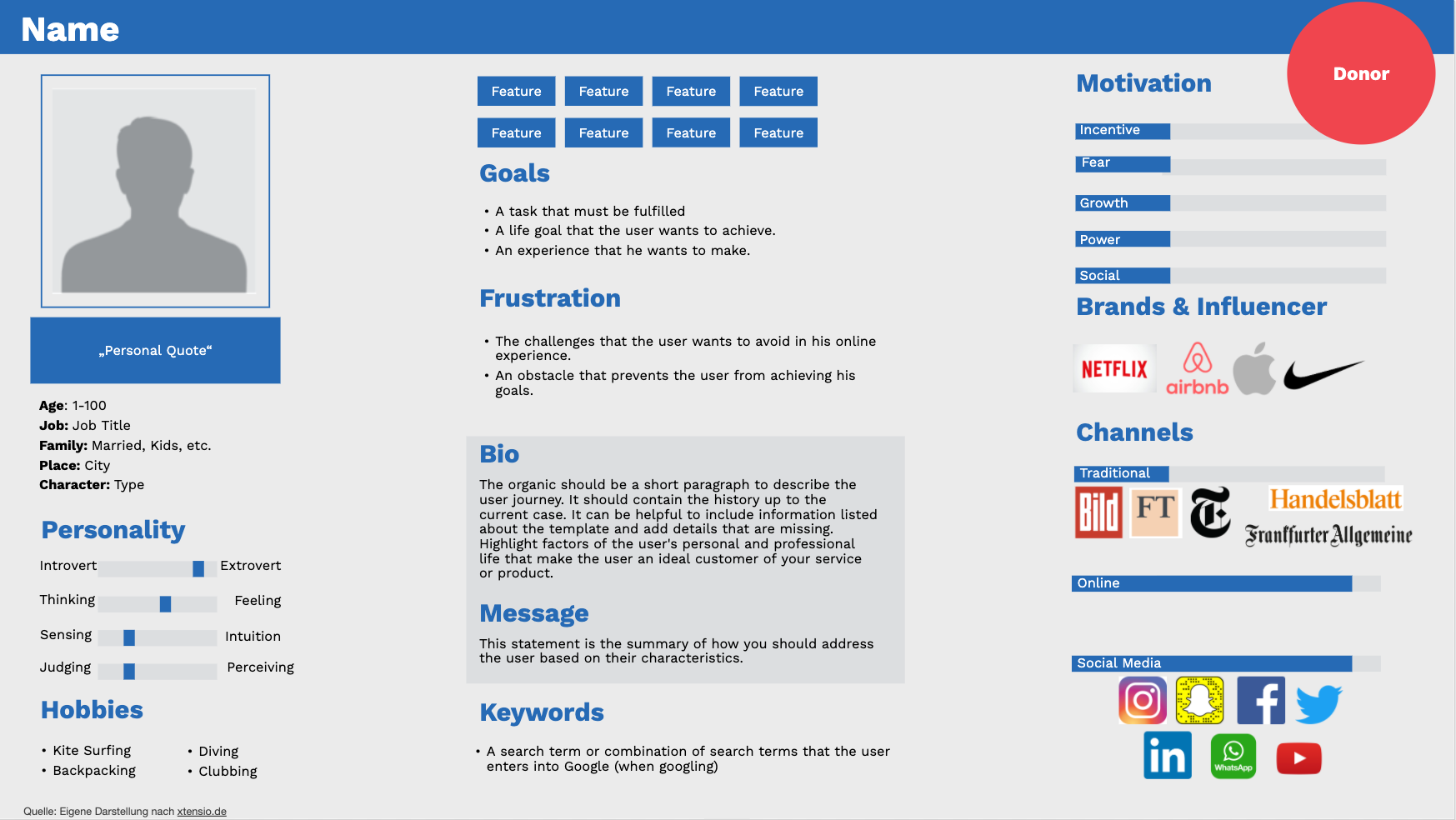Personas: Know your target group
Know your target group!
Design personas in 5 steps
Personas help you to address your target group. Because they are the be-all and end-all in fundraising. For this to succeed, you need to know your target group. We show you in five steps how to develop your own personas.
What are personas?
These are fictitious persons who represent your target group. They have the same needs, motivations and goals as your real users. They are specific persons who illustrate the user behaviour of the individual target group members. You are very likely to reach the introverted technology freak on other channels and with different messages than the organized superwoman.
What can personas do?
They bring you answers to the questions:
- Who are my donors anyway?
- Where does the personas come from? (place of residence, family background)
- What are her goals?
- What drives her?
- What motivates the person?
- What frustrates them?
- Which brands influence them?
- How does the person come to us?
- How and where can we reach them if they don’t know us yet?
What can’t personas do?
They make no claim to completeness and are not representative. It may well be that some personas only become apparent in the further course of working with them. It is also possible that there are intersections.
How do you develop personas?
Planning and setting goals
In order to develop personas and define their specific needs, suitable data is needed first. If you do not have the budget to collect this data, you can build it based on your experience. It is best to exchange information with people who are in contact with the potential donors, for example by using the donation service or social media. If necessary, you can verify them with data at a later date. A look into your CRM or web analysis tool can also help. In the case of external data collection, this is done through online surveys or interviews. Define a clear objective afterwards.
Analyze the data
The more data you have at your disposal the easier and more detailed the personas can be defined. So you can identify them better and “breathe life into” them. If you do not have enough data you have to rely on your gut feeling. Sit down with the experienced staff and develop them together.
Process and organize data
Form groups of people who are similar in their goals, needs, motivations and character. Then enrich them with information. If you do not have enough data available for a group, make assumptions in order to obtain a description of the persona that is as comprehensive as possible.
Define the personas
Then the personification of the main groups and their sub-groups begins by putting the collected information into text form. Thus the persona is “brought to life” piece by piece. Give it a name, an age, a place of residence and define the details: hobbies, job, studies, circle of friends, brands that influence the persona, channels on which it communicates. Give the persona a face and visualize it. The more precisely you personify this fictitious persona, the easier it will be for you to visualize for whom you are doing the work and what you have to say to reach them.

Integrate the personas
The success of personas is not obvious or tangible for every employee. Introduce them step by step into your processes. Talk about you regularly and ask yourself when there are new developments: How would Lisa cope with this innovation? Can we reach Ali on this channel? In this way, project participants get used to working with them bit by bit. Ideally, you will succeed in developing solutions and arguments that are oriented towards the viewpoint of a donor or supporter.
You would like to develop your own personas, but just cannot get ahead? We are happy to help you with this! Please contact us.
